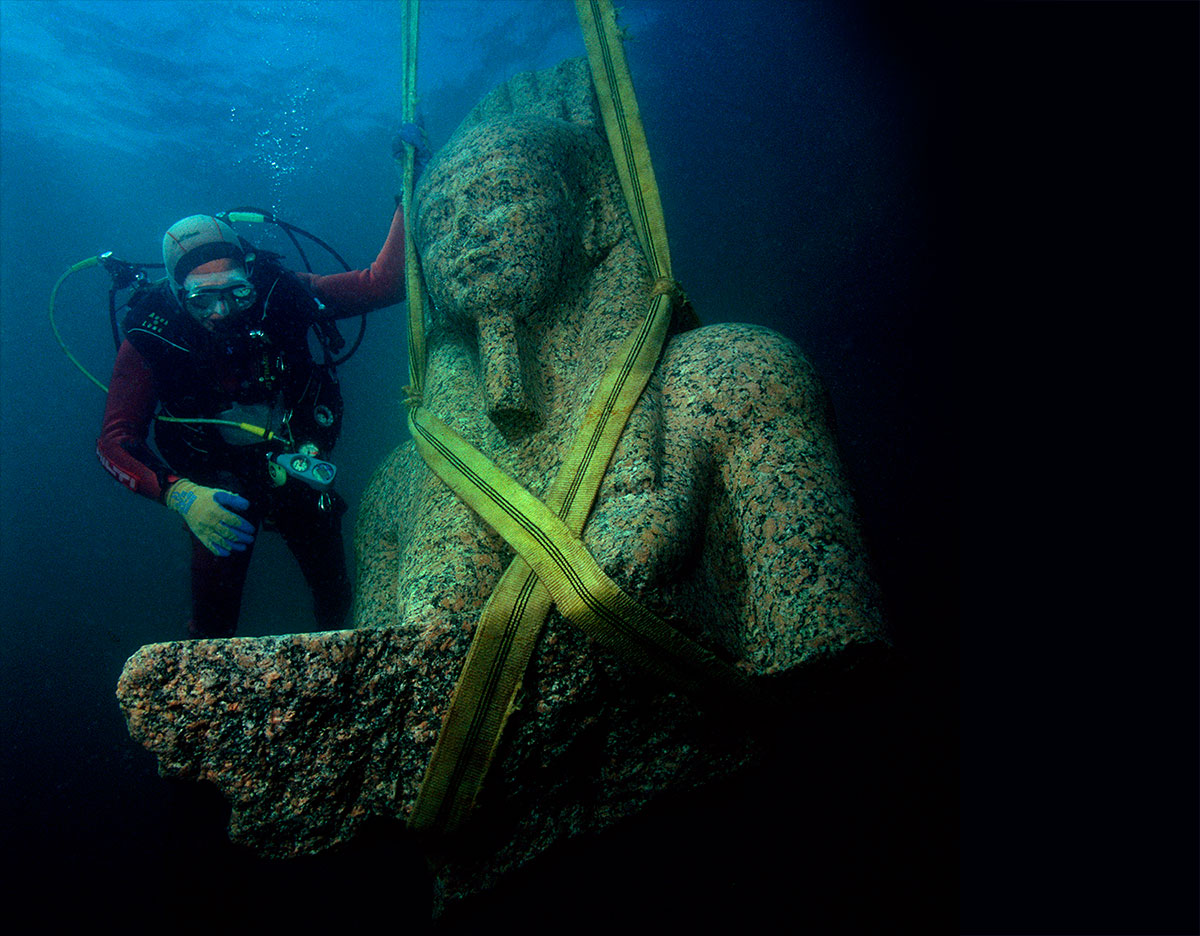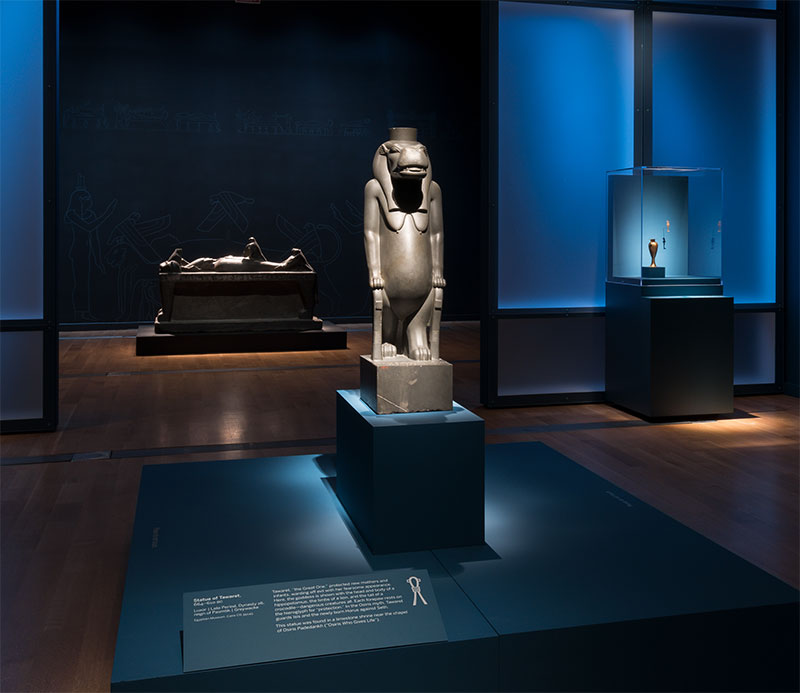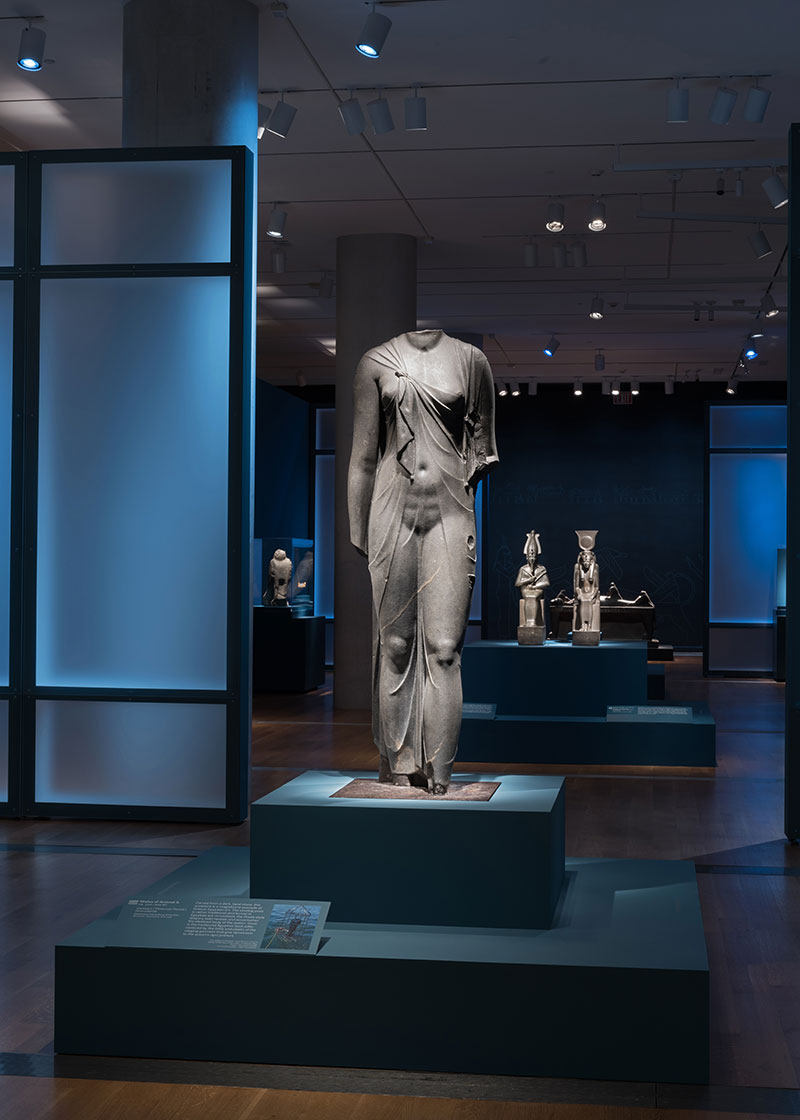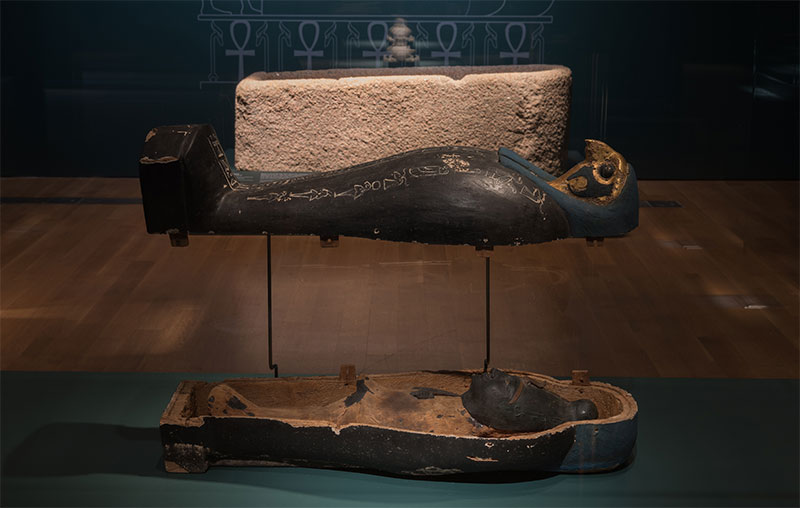By Kathleen Reid

Treasures of Ancient Egypt: Sunken Cities is a rich, compelling and multi-layered exhibition containing artifacts recovered from Aboukir Bay by Frank Goddio, the director of the European Institute of Underwater Archeology, and a team of archeologists. The 250 objects were gathered over a twenty-year period of time; they are combined with 40 works borrowed from Egyptian museums to provide an impressive rendering of ancient life. This incredible underwater discovery tells the story of Egypt’s Ptolemaic Kingdom which was one of the wealthiest and most powerful kingdoms in the ancient Mediterranean. Dr. Peter Schertz, VMFA’s Jack and Mary Ann Frable Curator of Ancient Art, began the process of planning two years ago; he was fascinated by the layers of complexity and combined rich cultural traditions implied in the objects.
These artifacts are from two powerful Egyptian cities, Canopus and Thonis-Heracleion, that sank into the Mediterranean Sea 1,200 years ago. The cosmopolitan society of Ptolemaic Egypt resulted from the blending of Greek and Egyptian cultures after the conquests of Alexander the Great. Dr. Schertz explains that there is not a word for ‘art’ in the Greek language. “It didn’t exist to be art, but these objects were everyday items made to please the gods.” He adds, “The wealthy could give quite elaborate dedications while the less wealthy might give smaller gifts like a small bronze or an image of Osiris or a simple offering to express their piety.”
The Egyptian god Osiris was the ruler of the underworld and rebirth as well as a central religious figure in this exhibition. Here is an abbreviated version of the myth: Osiris was an Egyptian King until his brother Seth, murdered him by cutting him into pieces. His wife, Isis, recovered all of the pieces and wrapped his body back up, thereby creating the first mummy. His son, Horus, was conceived after his death. Horus was the god of Protection and he was associated with the Pharaoh on earth. Dr. Schertz is fully aware that the conflicting characters and contradictions of this myth make it seem like a modern-day soap opera.
Walking through the 12,000 feet of gallery space, Dr. Schertz highlights several of his favorite objects:

1) Statue of Tawaret, 664-610 BC: Tawaret – “The Great One” — protected new mothers and infants from evil. Schertz says, “I know she is meant to be frightening, but she’s awfully cute.”

2) Statue of Arisnoe II, 300-200 BC: This sculpture is made in black stone and remains a headless beauty. Schertz points out the ancient Egyptian influence is seen in the stiffness of the figure, a way of conveying strength and stability. This pose is uniquely combined with the lovely draped garment reminiscent of ancient Greek ‘wet drapery’ style.

3) Osiris Vegetans Figure in a Falcon-headed Coffin, 800-600 BC: This exhibition shows an annual religious ritual known as the Mysteries of Osiris. It was a celebration held at the end of the flood season in which the murder, dismemberment, and rebirth of Osiris was reenacted. Schertz notes that the placement of this figure in the exhibition was complicated in order to get the figure to align with both the basin and the wall drawing behind the basin.
VMFA is the final venue before these remarkable artifacts return to Egypt. Sunken Cities has traveled from London to Paris to Zurich and, in the United States, St. Louis, Minneapolis, and The Ronald Reagan Presidential Library in southern California. An already challenging undertaking, the installation at VMFA was transformed into a Herculean effort given the number of restrictions and procedure changes brought on by the pandemic. Walls that were once considered permanent were moved to accommodate this massive display. The team at VMFA also had limited resources to interpret the objects so that the story was told correctly. Dr. Schertz is extremely grateful to the designers, art handlers, registrars, exhibition department and museum educators for going above and beyond. He concludes, “They all deserve an enormous amount of credit for working tirelessly in new, complicated circumstances to make this exhibition happen.”
Sunken Cities is currently OPEN and a must-see. The exhibition runs until January 18, 2021.
Kathleen Reid is the Communications Co-Chairman of the CANVAS Advisory Committee.